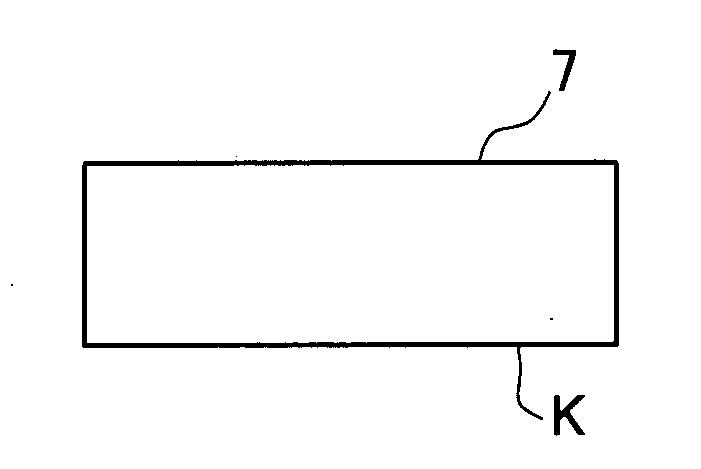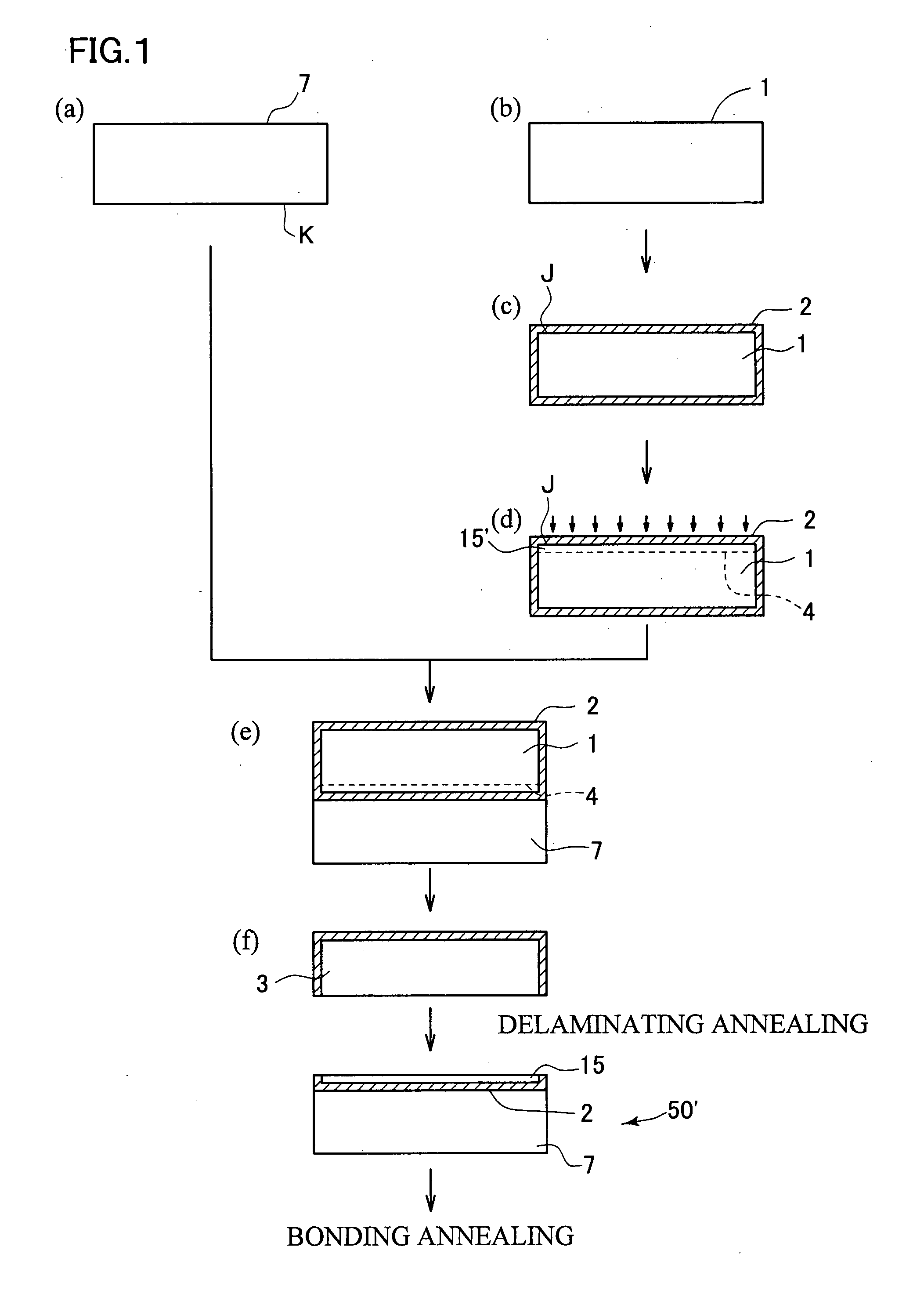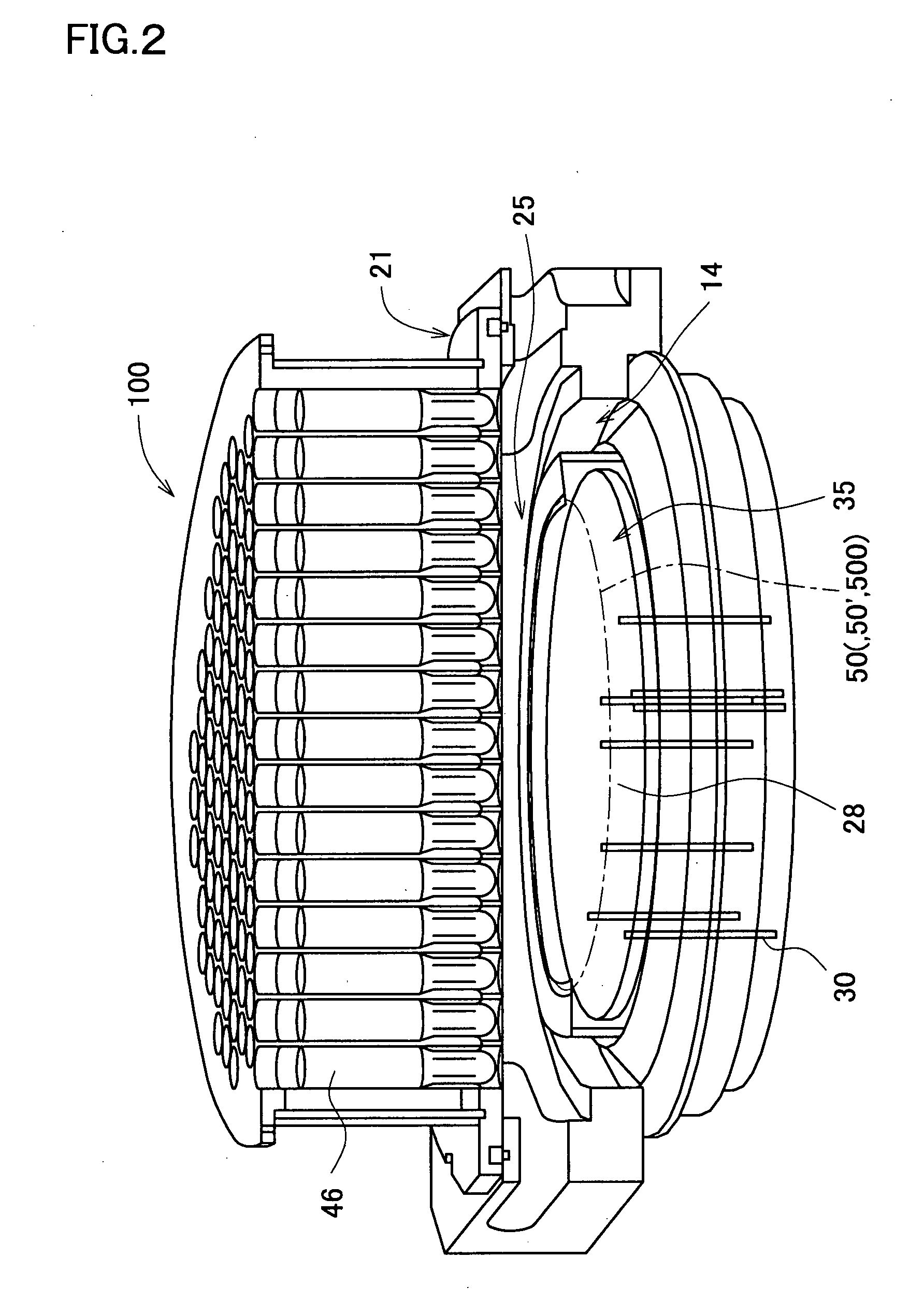Method Of Manufacturing Soi Wafer And Thus-Manufactured Soi Wafer
a manufacturing method and technology of soi wafer, which are applied in the direction of basic electric elements, electrical apparatus, semiconductor devices, etc., can solve the problems of affecting the quality of soi wafers, etc., to achieve rapid thermal processing, reduce the number of precipitation nuclei, and suppress the density of bmd formation
- Summary
- Abstract
- Description
- Claims
- Application Information
AI Technical Summary
Benefits of technology
Problems solved by technology
Method used
Image
Examples
embodiment
Second Mode of Embodiment
[0074]The SOI wafers after completion of the bonding annealing and therefore having a large number of BMD formed in the base wafers can be subjected to the precipitate clearing annealing aimed at reducing the density of formation of the BMD. First, prior to the precipitate clearing annealing, an oxide film on the surface of the SOI wafer is removed, and then subjected to a process step for removing a damaged layer and surface roughness of the SOI layer. It is known that fabrication of SOI wafers by the ion implantation delamination method produces a damaged layer and surface roughness, when ion implantation is carried out, remained in the surficial portion of the SOI layer. It is therefore a general practice to remove the damaged layer and surface roughness formed in the SOI layer after completion of the bonding annealing. A method of annealing in an inert gas such as Ar gas, or hydrogen gas, or a mixed gas of the both is adoptable to the removal step. The a...
PUM
| Property | Measurement | Unit |
|---|---|---|
| peak wavelength | aaaaa | aaaaa |
| hold temperature | aaaaa | aaaaa |
| temperature | aaaaa | aaaaa |
Abstract
Description
Claims
Application Information
 Login to View More
Login to View More - R&D
- Intellectual Property
- Life Sciences
- Materials
- Tech Scout
- Unparalleled Data Quality
- Higher Quality Content
- 60% Fewer Hallucinations
Browse by: Latest US Patents, China's latest patents, Technical Efficacy Thesaurus, Application Domain, Technology Topic, Popular Technical Reports.
© 2025 PatSnap. All rights reserved.Legal|Privacy policy|Modern Slavery Act Transparency Statement|Sitemap|About US| Contact US: help@patsnap.com



